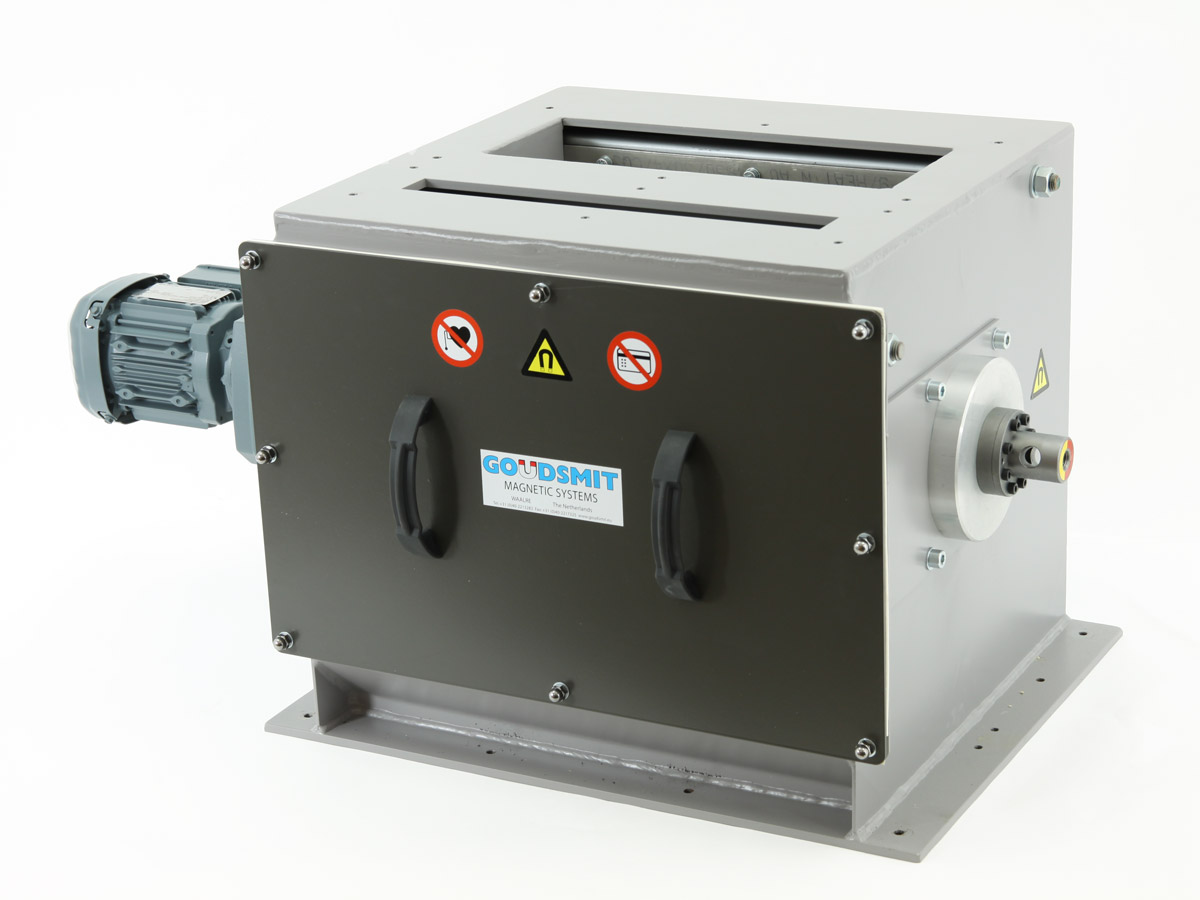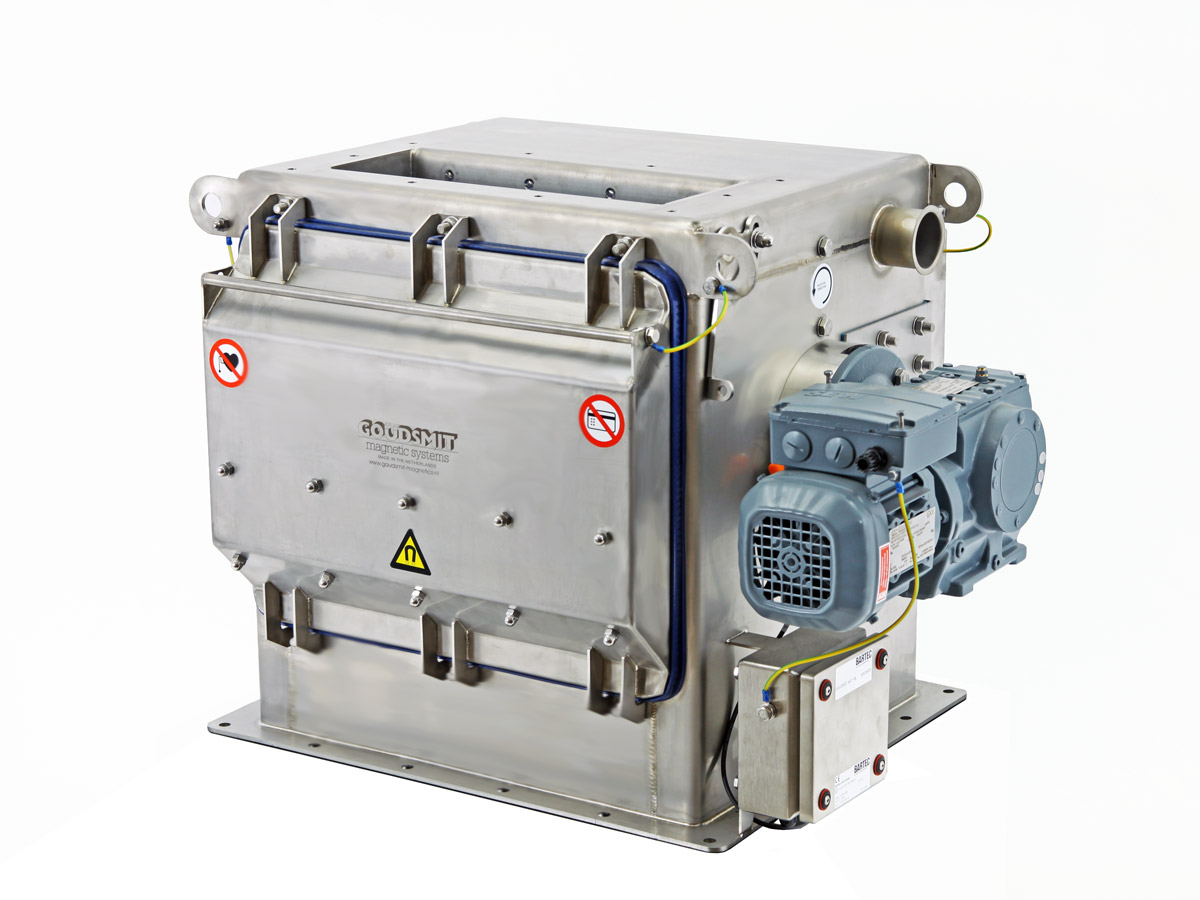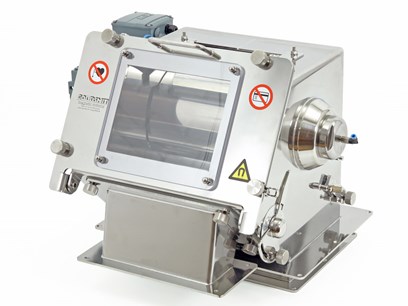Magnetic drum separator
Application
If the material is supplied via a vibratory chute, it is possible to separate weakly magnetic particles, such as particles from machined stainless steel, and even paramagnetic particles. Due to the continuous cleaning, the drum magnet is very suitable for product flows with heavy magnetic particle contamination.
Goudsmit supplies various drum magnets:
- for fine or coarse product streams;
- for small or large capacities;
- for materials containing little/lots of magnetic particles;
- for various industries: from the food industry to recycling.
Applications:
- prevention of ferromagnetic or paramagnetic contamination in your finished product;
- prevention of avoidable damage to machines (injection-moulding machines, extruders, mixers, grinders and other equipment).
Types
- The standard magnetic drum separator is suitable for coarser raw materials in the plastics and ceramics industries.
- The food/pharma drum magnets have been specifically developed for the food and pharma industries. They have a small capacity yet filter smaller Fe (and even weak magnetic) particles out of a product stream.
- The LenaStar even filters out paramagnetic particles such as: stones, mud, insect excrement, etc. from your dried raw materials (e.g. tea, spices).
Operation
A drum magnet is a stationary (180°) magnet segment, around which a stainless steel drum rotates. The magnet attracts magnetic particles that are in the product. The drum carries the attached particles with it to the bottom of the drum. There the particles drop off and can be collected and carried away. For strongly magnetic particles, carriers are placed on the drum to ‘push’ the particles out of the magnetic field. The advantage of a drum magnet is that it is a continuous cleaning/separating system, in which it is not necessary to stop the product flow to remove the magnetic particles.



